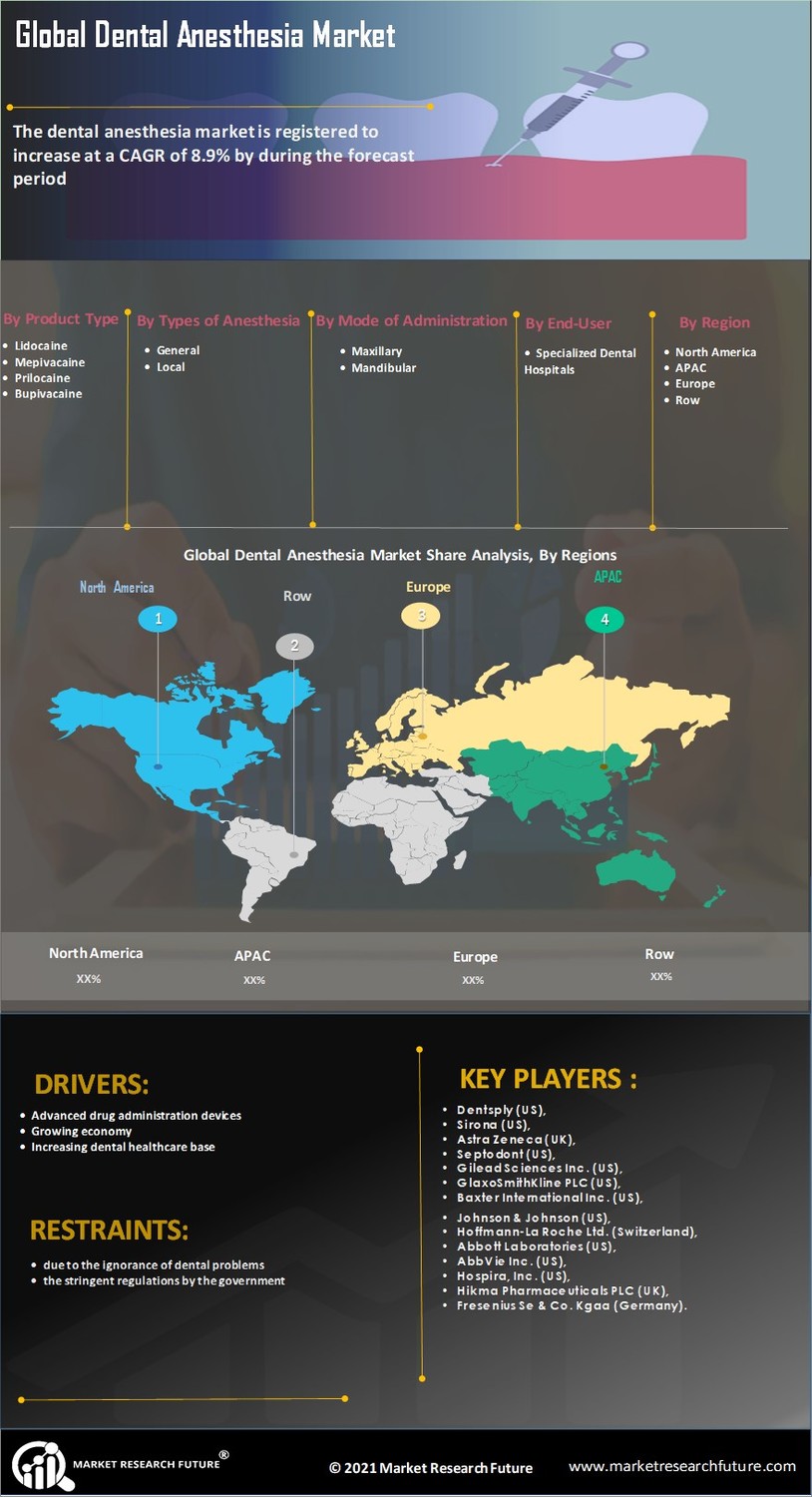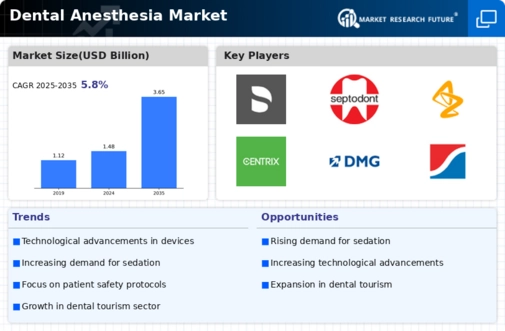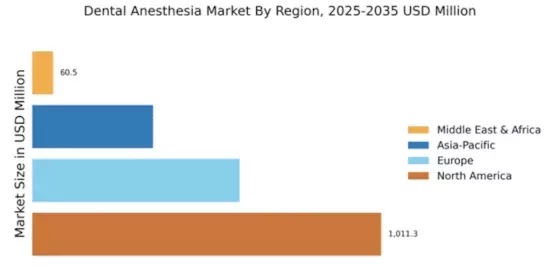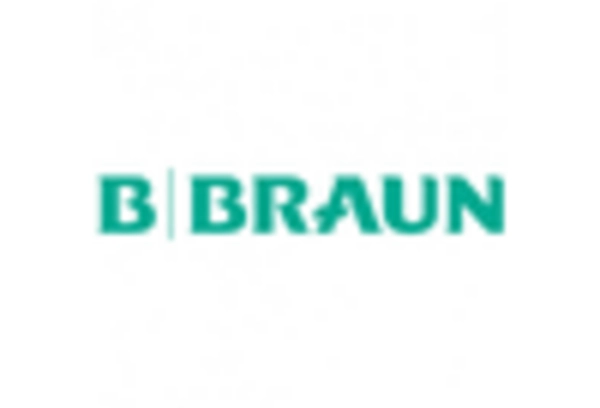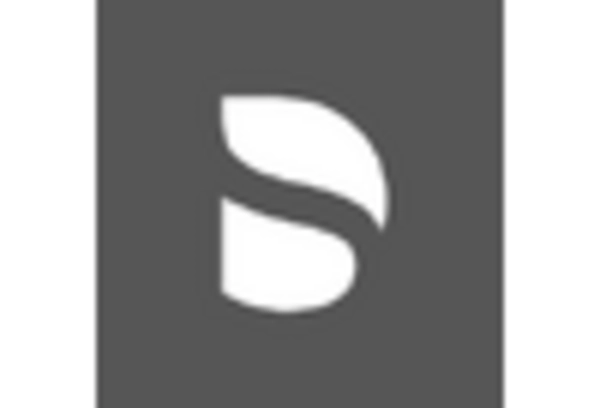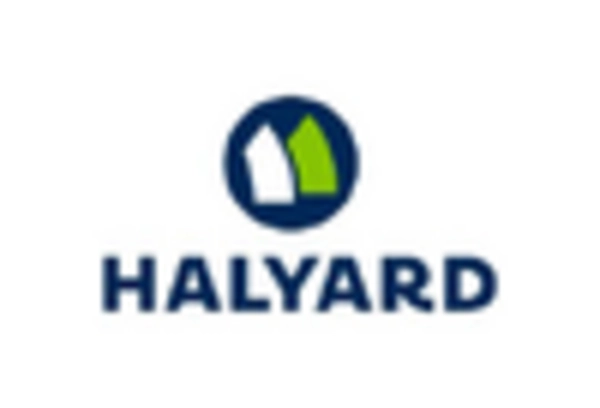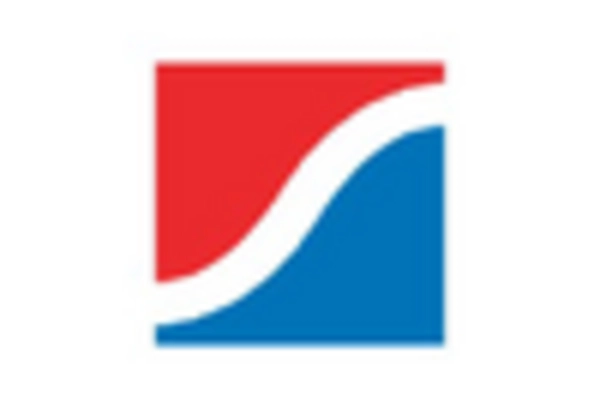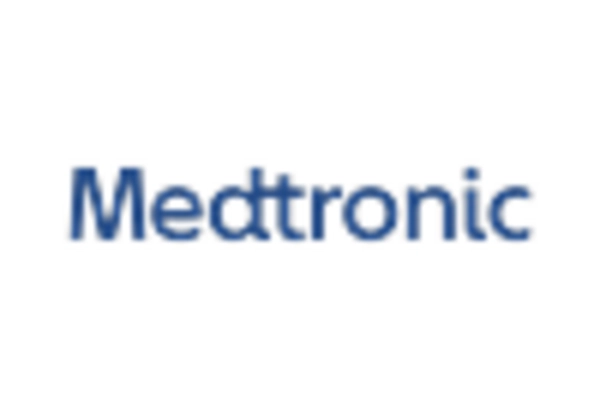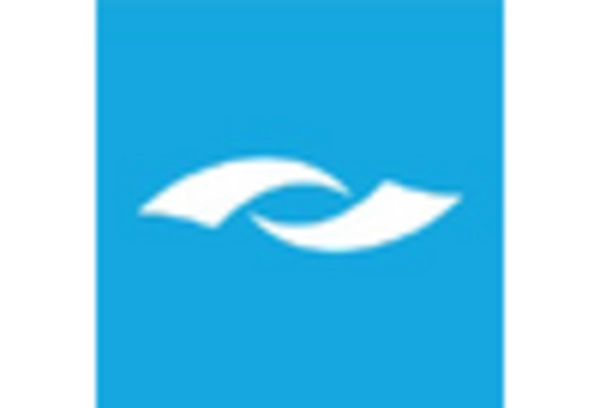Market Growth Projections
The Global Dental Anesthesia Market Industry is projected to experience substantial growth over the next decade. With a market value of 1.48 USD Billion in 2024, it is anticipated to reach 3.65 USD Billion by 2035, reflecting a CAGR of 8.53% from 2025 to 2035. This growth is driven by various factors, including technological advancements, increasing dental procedures, and a growing geriatric population. The market's expansion indicates a robust demand for innovative anesthesia solutions that cater to diverse patient needs and preferences.
Increasing Geriatric Population
The Global Dental Anesthesia Market Industry is poised for growth due to the rising geriatric population, which often requires dental care and anesthesia for various procedures. As individuals age, they tend to experience more dental issues, necessitating treatments that involve anesthesia. This demographic shift is expected to drive market expansion, with the geriatric population projected to reach 1.5 billion by 2030. Consequently, the demand for safe and effective dental anesthesia solutions tailored to older patients will likely increase, further solidifying the industry's growth trajectory.
Growing Awareness of Oral Health
There is a growing awareness of oral health among the global population, which is positively influencing the Global Dental Anesthesia Market Industry. Educational campaigns and initiatives by health organizations are emphasizing the importance of regular dental check-ups and treatments. This heightened awareness is leading to an increase in dental visits, thereby driving the demand for anesthesia services. As the market evolves, it is expected that the focus on preventive care will continue to grow, resulting in a more significant need for effective dental anesthesia solutions to ensure patient comfort during procedures.
Rising Demand for Dental Procedures
The Global Dental Anesthesia Market Industry is experiencing a notable increase in demand for dental procedures, driven by a growing awareness of oral health and aesthetics. As more individuals seek cosmetic dental treatments, the need for effective anesthesia options rises. In 2024, the market is projected to reach 1.48 USD Billion, reflecting the increasing number of dental surgeries performed globally. This trend is likely to continue, as advancements in dental technology and techniques enhance patient experiences, thereby further propelling the demand for dental anesthesia solutions.
Expansion of Dental Clinics and Practices
The expansion of dental clinics and practices worldwide is a crucial driver for the Global Dental Anesthesia Market Industry. As more dental professionals establish practices, particularly in emerging economies, the demand for dental anesthesia is expected to rise. This expansion is facilitated by increased investments in healthcare infrastructure and the establishment of dental schools, which produce a steady stream of qualified practitioners. By 2035, the market is projected to reach 3.65 USD Billion, indicating a robust growth trajectory fueled by the proliferation of dental services and the corresponding need for anesthesia.
Technological Advancements in Anesthesia Delivery
Technological innovations in anesthesia delivery systems are significantly impacting the Global Dental Anesthesia Market Industry. The introduction of computer-controlled local anesthetic delivery systems and advanced monitoring devices enhances the precision and safety of anesthesia administration. These advancements not only improve patient comfort but also reduce the risk of complications during dental procedures. As a result, dental practitioners are increasingly adopting these technologies, contributing to the market's growth. The anticipated CAGR of 8.53% from 2025 to 2035 indicates a robust future for these innovations within the industry.
